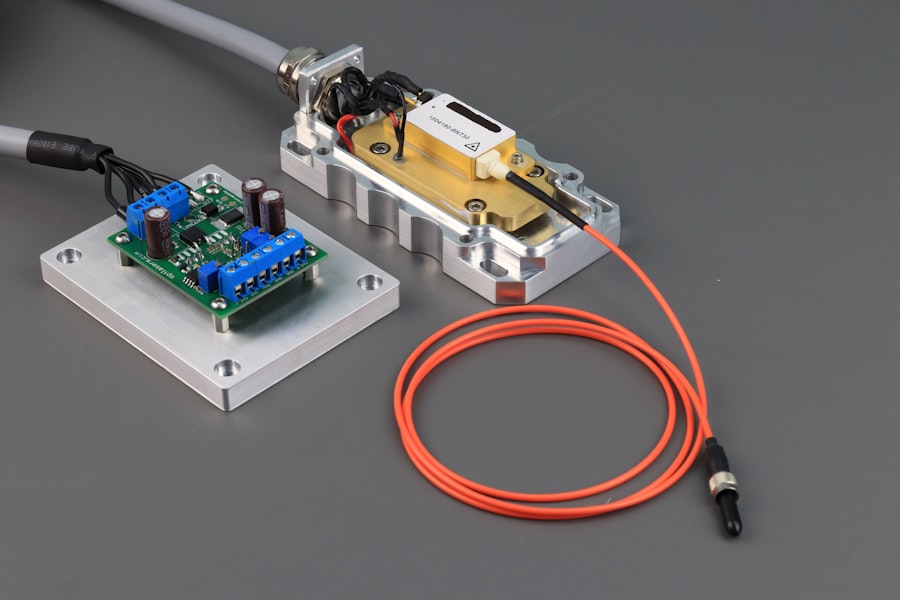Laser treatment has revolutionized the field of medicine and aesthetics, offering a range of solutions for various conditions. At its core, laser treatment utilizes focused light energy to target specific tissues in the body. This technology can be employed for both therapeutic and cosmetic purposes, making it a versatile option for many individuals.
You may find that lasers can effectively treat skin conditions, remove unwanted hair, or even assist in surgical procedures. The precision of laser technology allows for minimal damage to surrounding tissues, which can lead to quicker recovery times and less discomfort compared to traditional methods. As you delve deeper into the world of laser treatment, it’s essential to understand the different types of lasers available and how they function.
Each laser emits light at specific wavelengths, which can be absorbed by various types of tissue. For instance, some lasers are designed to target pigmentation in the skin, while others may focus on vascular lesions or hair follicles. This specificity is what makes laser treatment so appealing; it allows for tailored approaches to individual needs.
By understanding the underlying principles of laser technology, you can make more informed decisions about whether this treatment is right for you.
Key Takeaways
- Laser treatment uses focused light to treat various skin conditions and can be used for hair removal, tattoo removal, and skin resurfacing.
- After laser treatment, it is important to protect the treated area from sun exposure and follow the post-surgery care instructions provided by the specialist.
- Risks and complications of laser treatment may include scarring, infection, and changes in skin pigmentation.
- Different types of laser treatments include ablative, non-ablative, and fractional lasers, each with specific uses and benefits.
- Consultation with a specialist is crucial before undergoing laser treatment to discuss expectations, potential risks, and the most suitable treatment option.
- The recovery process after laser treatment varies depending on the type of treatment and the individual’s skin type, but typically involves redness and swelling that subsides over time.
- Potential benefits of laser treatment include improved skin texture, reduced wrinkles, and the removal of unwanted hair or tattoos.
- Alternative treatment options to laser treatment may include chemical peels, microdermabrasion, or topical creams, depending on the specific skin condition being treated.
Post-Surgery Considerations
After undergoing laser treatment, it’s crucial to pay attention to your post-surgery care to ensure optimal healing and results. You may experience some redness, swelling, or discomfort in the treated area, which is a normal part of the healing process. It’s important to follow your specialist’s aftercare instructions closely, as they will provide guidance on how to manage these symptoms effectively.
This may include applying cold compresses to reduce swelling or using specific topical ointments to promote healing. In addition to managing physical symptoms, you should also consider lifestyle adjustments during your recovery period. Avoiding sun exposure is particularly important, as your skin may be more sensitive after treatment.
Wearing sunscreen with a high SPF and protective clothing can help shield your skin from harmful UV rays.
By taking these post-surgery considerations seriously, you can enhance your recovery experience and achieve the best possible outcomes from your laser treatment.
Risks and Complications

While laser treatment is generally considered safe, it is not without its risks and potential complications. As with any medical procedure, there are inherent risks that you should be aware of before proceeding. Common side effects may include temporary redness, swelling, or discomfort in the treated area.
In some cases, you might experience changes in skin pigmentation or scarring, particularly if proper aftercare is not followed. It’s essential to have realistic expectations and understand that while complications are rare, they can occur. To mitigate these risks, it’s vital to choose a qualified and experienced practitioner for your laser treatment.
A skilled specialist will assess your individual needs and medical history to determine the most appropriate type of laser and treatment plan for you. They will also provide you with detailed information about potential risks specific to your situation. By being proactive and informed about the possible complications, you can make better decisions regarding your treatment and feel more confident in your choice.
For more information on laser treatment risks and complications, you can visit the Mayo Clinic website.
Types of Laser Treatments
| Treatment Type | Benefits | Common Uses |
|---|---|---|
| Carbon Dioxide (CO2) Laser | Improves skin tone, texture, and tightens skin | Wrinkle reduction, scar treatment, skin resurfacing |
| Erbium Laser | Less invasive, minimal damage to surrounding tissue | Acne scars, fine lines, pigmentation issues |
| Pulsed-Dye Laser | Treats redness, rosacea, and vascular lesions | Spider veins, port-wine stains, rosacea |
| Q-Switched Laser | Targets pigmentation, tattoos, and birthmarks | Tattoo removal, pigmented lesions, birthmarks |
There are several types of laser treatments available, each designed to address specific concerns or conditions. One of the most common types is ablative laser treatment, which removes layers of skin to promote new skin growth. This method is often used for resurfacing the skin, reducing wrinkles, and treating scars.
If you’re looking for a more aggressive approach to skin rejuvenation, ablative lasers might be worth considering. On the other hand, non-ablative lasers work by heating the underlying skin tissue without damaging the surface layer. This type of treatment is often used for skin tightening and improving skin texture with minimal downtime.
If you prefer a gentler approach with quicker recovery times, non-ablative treatments may be more suitable for you. Additionally, there are specialized lasers for hair removal, tattoo removal, and even vascular treatments that target blood vessels in the skin. Understanding the various types of laser treatments available will help you identify which option aligns best with your goals.
Consultation with a Specialist
Before committing to any laser treatment, scheduling a consultation with a qualified specialist is essential. During this initial meeting, you will have the opportunity to discuss your concerns and goals in detail. The specialist will evaluate your skin type, medical history, and any previous treatments you may have undergone.
This thorough assessment will help them recommend the most appropriate laser treatment tailored specifically for you. Moreover, this consultation is an excellent time for you to ask questions about the procedure itself, including what to expect during and after treatment. You should feel comfortable discussing any apprehensions or uncertainties you may have regarding the process.
A reputable specialist will take the time to address your concerns and provide clear explanations about the benefits and risks associated with the chosen treatment. By engaging in an open dialogue during your consultation, you can ensure that you are making an informed decision that aligns with your expectations.
Recovery Process
Immediate After-Effects
Immediately after the procedure, you can expect some degree of redness and swelling in the treated area. This is a normal reaction as your body begins to heal itself.
Recovery Timeline
The recovery period can range from a few days to several weeks, depending on the intensity of the treatment. During this time, it’s crucial to follow your specialist’s aftercare instructions diligently. You may be advised to avoid strenuous activities or excessive sun exposure for a certain period.
Supporting the Healing Process
Keeping the treated area clean and moisturized can aid in healing and minimize discomfort. As you progress through your recovery journey, you might notice gradual improvements in your skin’s appearance as it heals and regenerates. Patience is key during this time; while results may not be immediate, they will become more apparent as your skin continues to recover.
Potential Benefits
The potential benefits of laser treatment are numerous and can significantly enhance your quality of life. For many individuals seeking cosmetic improvements, laser treatments can lead to smoother skin texture, reduced wrinkles, and diminished scars or blemishes. These aesthetic enhancements can boost your self-confidence and overall satisfaction with your appearance.
Additionally, if you struggle with conditions such as acne or rosacea, laser treatments can provide effective relief by targeting the underlying causes. Beyond cosmetic applications, laser treatments also offer therapeutic benefits for various medical conditions. For instance, they can be used to treat certain eye disorders or assist in surgical procedures with greater precision than traditional methods allow.
The versatility of laser technology means that it can cater to a wide range of needs—whether you’re looking for aesthetic improvements or seeking relief from a medical condition. By exploring these potential benefits, you can better understand how laser treatment might positively impact your life.
Alternative Treatment Options
While laser treatment offers many advantages, it’s essential to consider alternative options that may also meet your needs. Depending on your specific concerns or conditions, other treatments could provide effective solutions without the use of lasers. For example, chemical peels and microdermabrasion are popular alternatives for skin resurfacing that utilize different techniques to achieve similar results.
If hair removal is your primary concern, traditional methods such as waxing or shaving may still be viable options for you. Additionally, there are various topical treatments available for skin conditions that do not involve invasive procedures. By exploring these alternative treatment options alongside laser therapy, you can make a well-rounded decision that considers all available avenues for achieving your desired outcomes.
In conclusion, understanding laser treatment involves recognizing its benefits and risks while also considering post-surgery care and alternative options available to you.
Whether you’re seeking cosmetic enhancements or therapeutic relief from medical conditions, laser treatment offers a promising avenue worth exploring as part of your overall health and wellness strategy.
If you are considering getting laser hair removal after surgery, it is important to consult with your doctor first to ensure it is safe for you. According to a recent article on





